Inflation has fallen for the fourth successive quarter.
Australia’s annual inflation rate fell to 4.1 per cent in the December quarter 2023, down from 7.8 per cent in the December quarter 2022.
The new rate is the lowest in two years and the closest in two years to the Reserve Bank’s target band of 2–3 per cent.
The decline in inflation exceeded market expectations. Even the Reserve Bank was expecting an inflation rate of 4.5 per cent in the year to December.
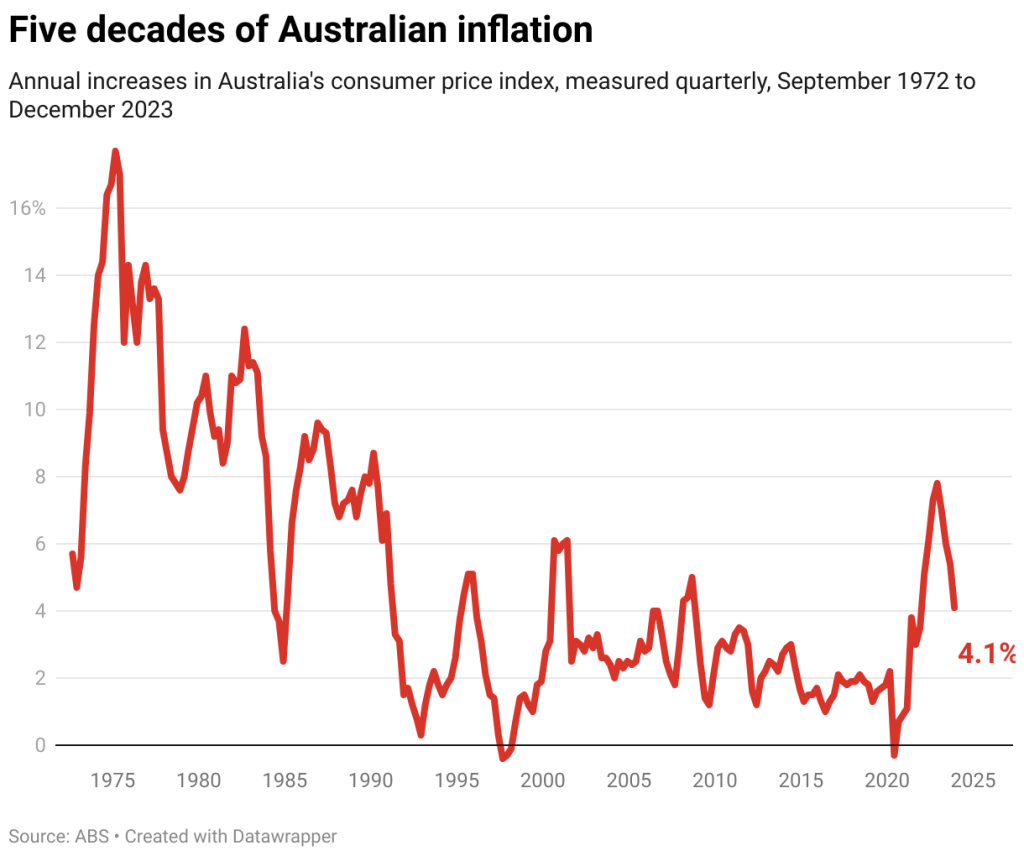
This quarterly result is consistent with the more experimental and volatile monthly measure which also shows annual inflation trending down from a high of 8.4 per cent in the year to December 2022 to just 3.4 per cent in the year to December 2023.
The fresh low is within spitting distance of the Reserve Bank’s target.
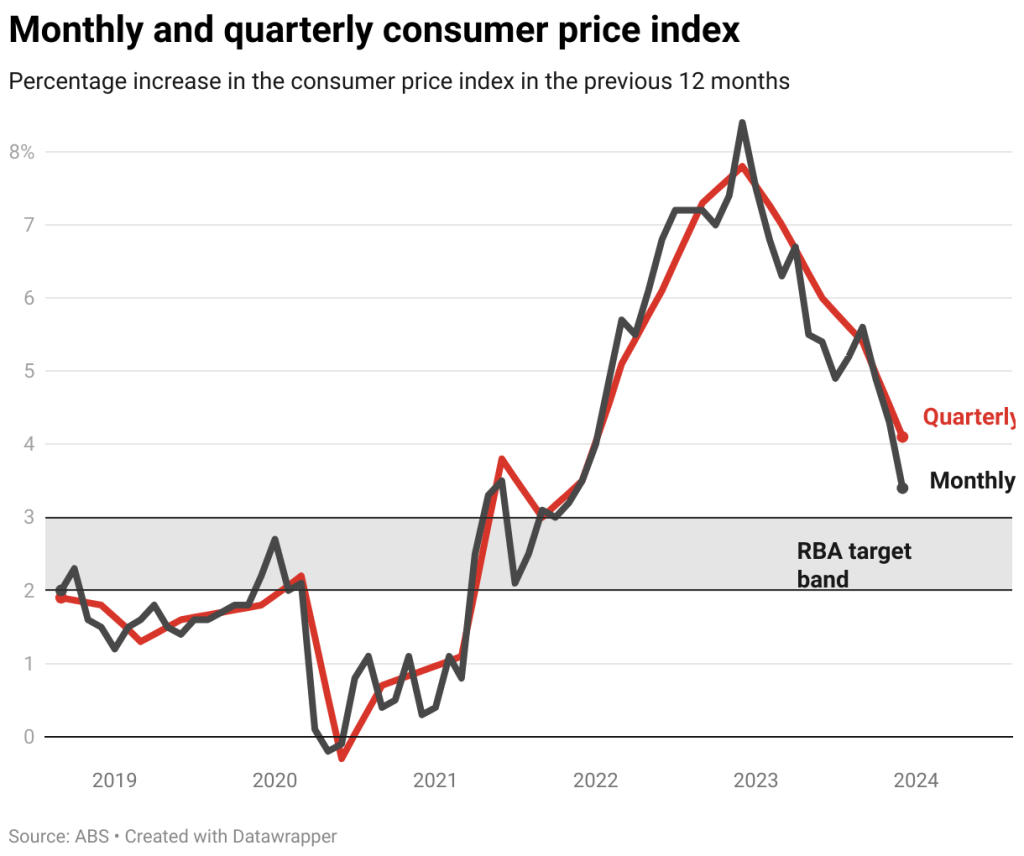
Price falls for clothing, household appliances, furniture, and fruit and vegetables have helped bring down inflation recently.
The government has helped by providing subsidies and rebates and other measures that have lowered or slowed the prices of electricity, rent, pharmaceuticals and childcare.
But making the task harder has been sharp rises in insurance charges (up 16.2 per cent during 2023 following natural disasters) and tobacco prices (up 10 per cent in part because of legislated increases in the tobacco excise).
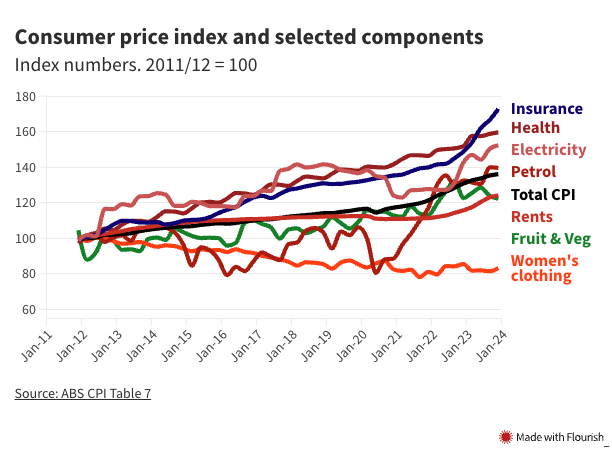
Even after the government assistance, electricity prices still rose by 6.9 per cent.
With vacancy rates low, and immigration adding to demand, home rents paid continue to rise. They climbed 7.3 per cent over 2023, a figure that was moderated by an increase in the maximum rate of Commonwealth Rent Assistance.
Bureau of Statistics analysis suggests that without the increase in rent assistance, rents paid would have climbed 8.9 per cent.
Even underlying inflation is sliding
To get a better idea of what would be happening to overall prices were it not for some unusual and outsized moves, the bureau calculates what it calls a trimmed mean measure of underlying inflation.
This excludes the 15 per cent of prices that climbed the most during each quarter and the 15 per cent that climbed the least or fell. Watched closely by the Reserve Bank, it also shows inflation falling, down to 4.2 per cent.

Australia gets a US inflation rate
Inflation also fell during 2023 in other Western nations including the United States, Canada and the United Kingdom.
Australian inflation took a bit longer to fall. Australia’s Reserve Bank, anxious to preserve as much employment as possible, was less aggressive with its interest rate increases.
Nevertheless, Australia’s inflation rate of 4.3 per cent now matches the rates in the US and Canada.
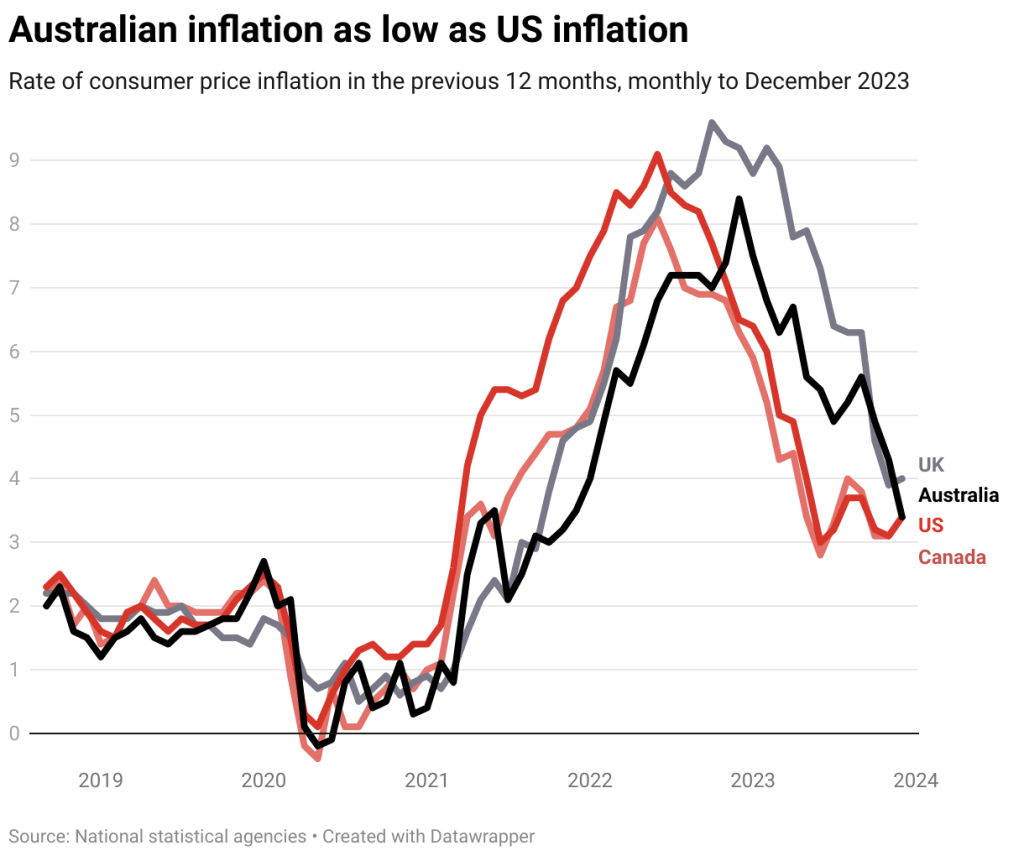
Haircut inflation, dentistry inflation coming down
A pattern observed across all of these countries is that inflation in the price of goods has come down faster than inflation in the price of services.
Inflation in service prices, driven largely by wages, was slower to climb, but when it did climb took longer to fall, encouraging Reserve Bank Governor Michele Bullock to identify the prices charged by hairdressers and dentists, as well as restaurants as those that were climbing strongly.
Inflation in the price of services turns out to have been coming down sharply at the time the governor made those comments, falling from 5.8 per cent in the year to September to 4.6 per cent in the year to December.
Inflation in the price of dental services fell from 4.9 per cent to 4 per cent, inflation in the price of hairdressing services fell from 6.7 per cent to 6.4 per cent, and inflation in the price of restaurant meals fell from 6.1 per cent to 4.6 per cent.
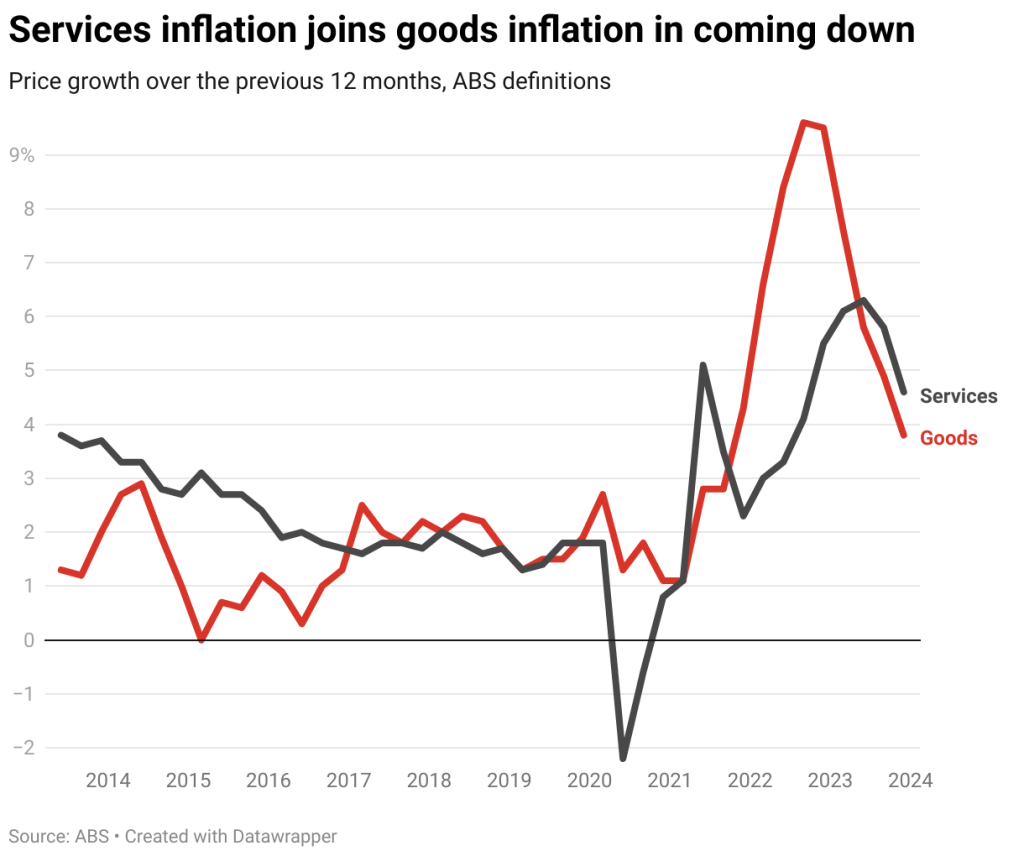
What will matter now is the ‘last mile’
Some forecasters have suggested that despite the rapid fall in inflation, the “last mile” back to the inflation target may take longer.
The International Monetary Fund doesn’t expect inflation to get back to the 2–3 per cent range until early 2026. The Reserve Bank expects it in late 2025.
Mitigating against an early return to target might be the rejigging of the Stage 3 tax cuts to direct more to those on lower incomes who are more likely to spend them, although the treasury and private forecasters expect this effect to be minor.
Accelerating an early return to target is likely to be retail electricity prices which are set to fall in the year ahead driven by what the Australian Energy Market Operator says was a 24 per cent fall in wholesale prices during 2022 driven by a record uptake in renewable generation.
Also contributing to an early return to target is likely to be a fall in inflationary expectations, evident in the Melbourne Institute’s expectations survey and a decline in the number of Australians searching for the word “inflation” on Google.
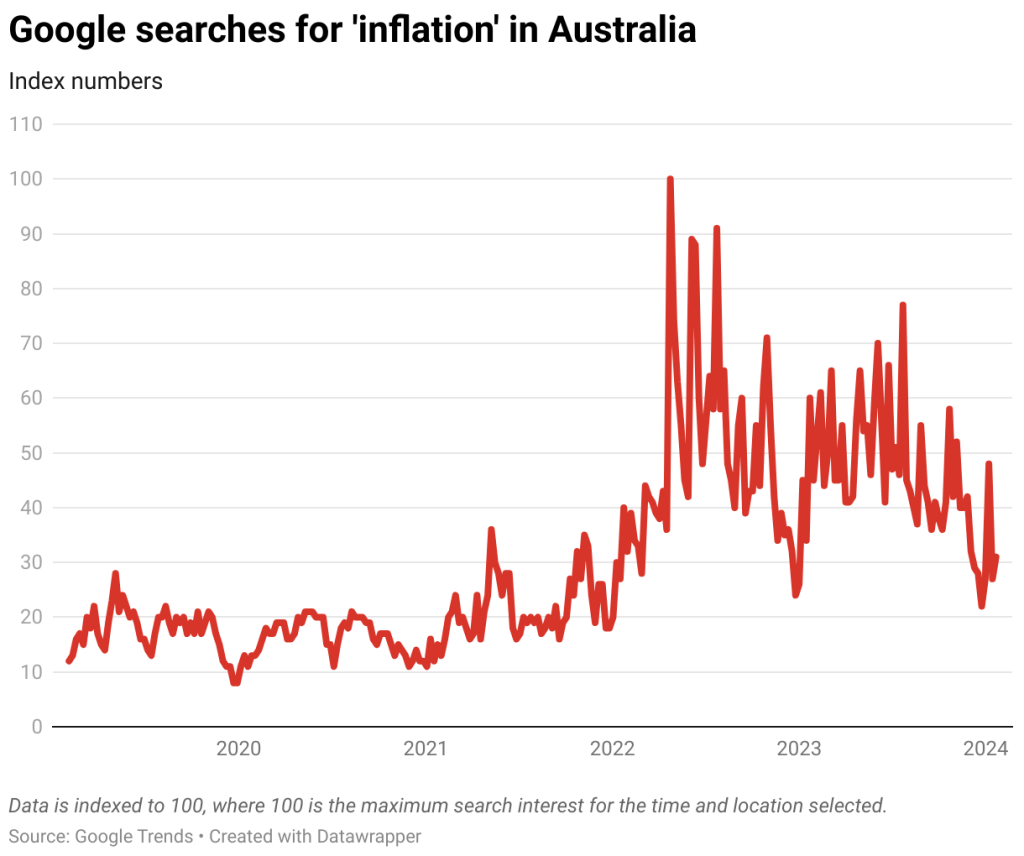
Steady ahead for interest rates
As recently as November, the Reserve Bank forecast an inflation rate of 4.5 per cent for the year to December, and it said after its December board meeting things were developing “broadly in line with expectations”.
It is now clear that wasn’t the case, and that services inflation in particular was falling faster than it thought.
This means it is most unlikely to raise interest rates when it holds its first meeting for the year on Monday and Tuesday, and unlikely to increase them again.
But any cut is likely to be some way off. An awful lot will depend on inflation from here on.
John Hawkins, Senior Lecturer, Canberra School of Politics, Economics and Society, University of Canberra
This article is republished from The Conversation under a Creative Commons license. Read the original article.
Lead Image Credit: iStock
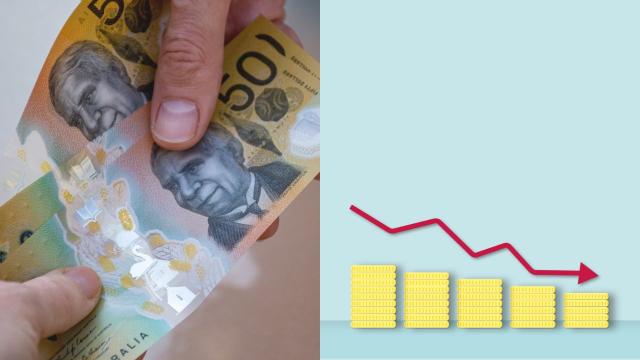
Leave a Reply
You must be logged in to post a comment.